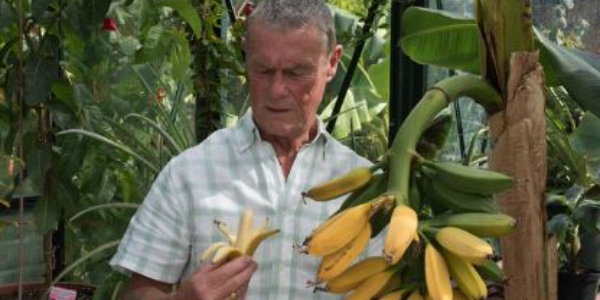Bananas have different tastes as they change from one stage of ripeness to another. Bananas’ unique taste and scent when ripe is adduced to an organic compound known as isoamyl acetate. There are 30-40 aromatic compounds that give bananas their natural flavor. Of all the aromatic compounds, isoamyl acetate is found in moderate quantities and plays a highly significant role in banana flavor.
Banana taste differs with the state in which the banana is consumed.
Yellow ripe bananas do not taste like green boiled bananas or fried bananas. Depending on an individual’s consumption preference, people use different terms to refer to the taste of bananas.
Different ingredients are used to improve and modify the taste of bananas when cooked. Different communities across the world have their renowned cultural ways of preparing banana meals. In this context, we will look into different forms in which banana is consumed, how they are prepared, and how they taste.
What do Ripen Yellow Bananas Taste Like?
Banana has transient taste during the ripening period as the degree of ripeness shift from one level to another. Unripe bananas having green peels are tasteless. Less ripe bananas have fewer sugars and are slightly tastier. As they ripen, they develop a distinct fruity flavor.
Yellow-ripened bananas have heightened sweetness due to accumulated starch. As the banana peels turn from yellow to brown as a result of increased ripening, the banana develops a flavor similar to vanilla, rum, or honey.
What is the taste of Red Bananas?
Red bananas are not commonly available. However, they are typical bananas that are more or less the same as normal yellow bananas. They are eaten when they are still fresh after they have matured because they contain high sugar content. Some have a bitter taste while some have a sweet taste.
The Taste of Boiled Bananas
Boiled bananas are made by dipping bananas with peels into hot water and heating them for about 15-30 minutes. Boiling bananas makes them soft, creamy, and sweet. Heating bananas make vitamins, starch, antioxidants, and fiber more accessible to the body since the cell wall is broken.
Boiling increases starch concentration in the banana resulting in high energy yield. The heat breaks down natural sugars in the banana making it sweet and tastier than a raw banana. Boiled bananas have a smooth texture and improved flavor.
Boiling banana breaks down fibers making the absorption of nutrients easier, unlike raw bananas which are rich in fiber and may be difficult to absorb. This is helpful for people with digestive problems.
Boiled bananas can also be used to make bread. Banana bread is a popular treat around the world.
Fried bananas
Fried bananas are sweet, tacky, and buttery. It has crispy edges. Fried bananas can be served as a whole meal on their own or can be made as a side dish or snack.
Green bananas do not produce good flavor when fried while overripe bananas will scatter when fried. The difference between fried bananas and plantains is very minimal. Green plantains when fried are savory while ripe plantains are almost like bananas when fried. Fried bananas and plantains are packed and sold in supermarkets as chips.

